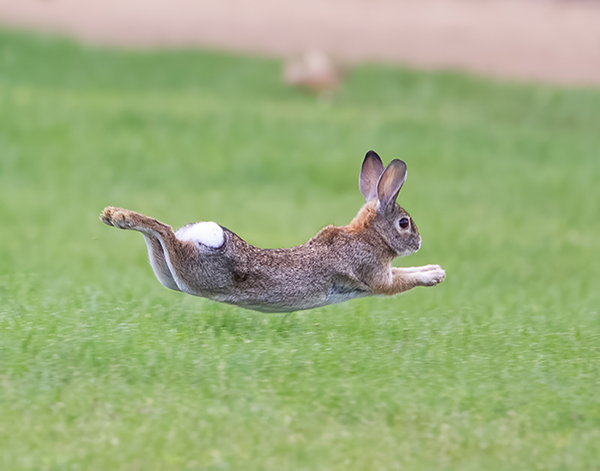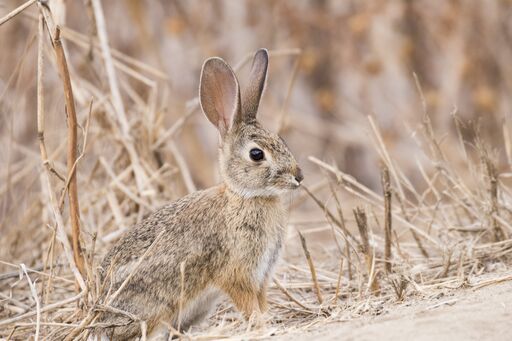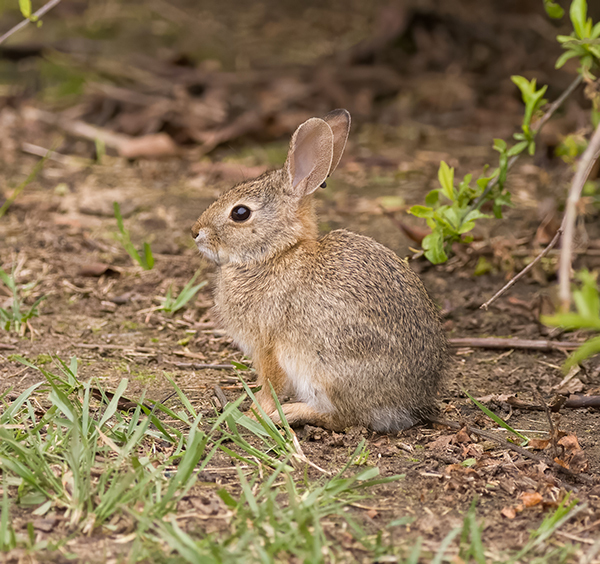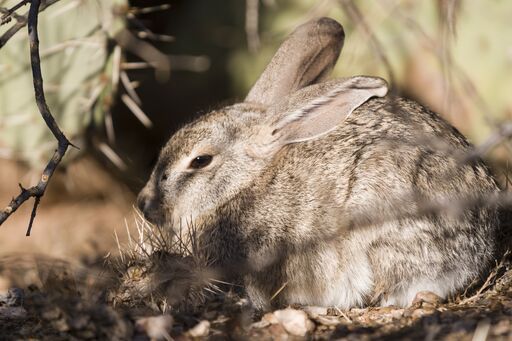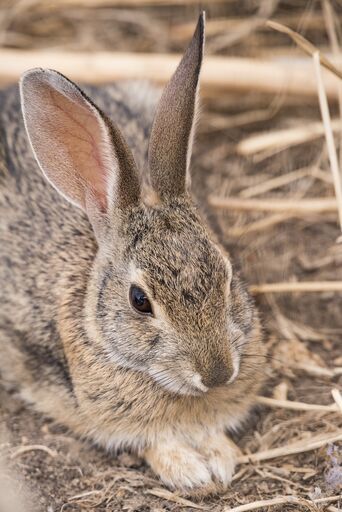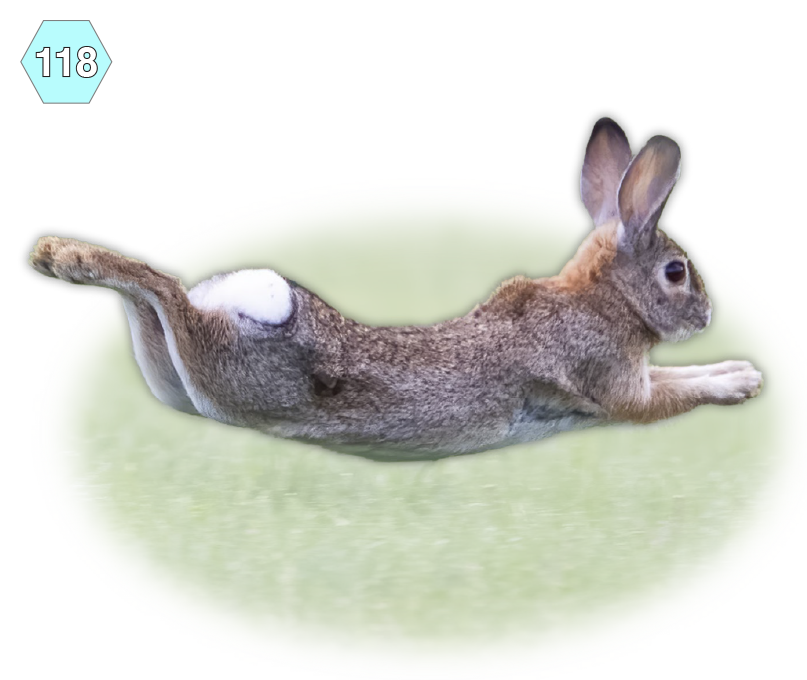
Desert Cottontail
Sylvilagus audubonii
Physical Description
- Medium-sized rabbit, 13 to 17 inches in length, weighing two to three pounds.
- Light colored, tan to gray, with a yellowish tinge, and a whitish belly.
- Orange-brown patch on nape of neck helps identify them to species.
- Named after their tail, which is shaped like a cotton ball and darker above and whiter below. Tail is more apparent than western brush rabbit’s tail.
- Ears are about 3-4 inches long and black tipped.
- Large hind feet, about 3 inches long.
- Females are larger than the males.
Range
- From eastern Montana south to west Texas and west to central Nevada and southern California, south to Baja California, Mexico.
Habitat
- Live in dry desert-like shrublands, grasslands, and pinyon juniper forests, as well as rivers and streams.
- Found at elevations up to 6,500 feet.
Reproduction
- In California, females bear live young year-round.
- In one year, a female may bear 20-30 young over 4-5 litters.
- A normal litter has 2-6 young, which are born blind, furless, and very vulnerable. They are born in a nest of grass and fur the mother has pulled from her belly.
- The baby bunnies are weaned at two weeks old and leave the nest area three weeks after being born.
Diet
- Eat leaves, grasses, forbs, shrubs, and even cacti.
- Will eat domestic crops, even the bark off of fruit trees.
- Get most of their water from plants or dew on plants.
- They eat their own fecal pellets to extract more nutrients from them.
Predators
- Coyotes, weasels, golden eagles, bald eagles, great horned owls, ferruginous hawks, badgers, foxes, bobcats, humans (especially Native Americans).
- Rattlesnakes prey on young cottontails.
Interesting Facts
- They conserve energy in the heat by hiding during the day and being active at dusk and at night. Their ears also help cool them down by having blood vessels right at the skin surface..
- How do you know a cottontail is eating your plants? Their teeth make a clean cut at a 45 degree angle, while deer and other grazers chew on the plants and leave a ragged edge..
- A cottontail can run in a zig zag pattern at 20 miles per hour to escape a predator..
Sources: DesertUSA; Monterey Mammals
Photo: Thomas A. Blackman
